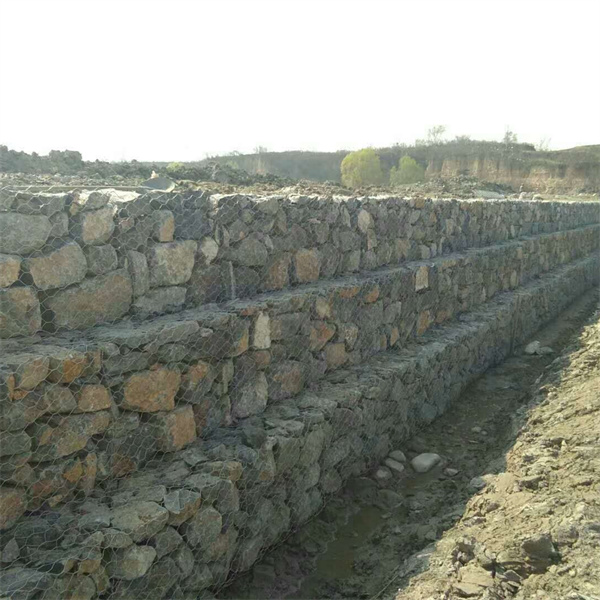ನವೆಂ . 08, 2024 15:11 Back to list
china gabion geotextile
Understanding the Role of Gabion Geotextiles in Modern Civil Engineering
In the realm of civil engineering and construction, the quest for durable and sustainable materials has led to the innovative use of gabion structures combined with geotextiles. Gabions, which are wire mesh containers filled with rocks or other materials, have proven to be effective solutions for erosion control, slope stabilization, and even aesthetic landscaping. When paired with geotextiles, these structures can significantly enhance their efficiency and longevity, making them increasingly popular in projects across China and around the world.
The Basics of Gabions
Gabions were first employed in the 19th century as a means of fortifying riverbanks and controlling erosion. They consist of wire cages filled with stones, and their permeable nature allows water to flow through, reducing hydrostatic pressures that can lead to structural failure. Traditionally, gabions have been used for applications such as retaining walls, riverbank stabilization, and noise barriers.
The advantages of gabion structures include their flexibility, ecological compatibility, and aesthetic versatility. They can be used in various environments, from rugged terrains to urban landscapes, blending naturally into the surroundings while providing functional benefits. Additionally, they are relatively easy and quick to install, making them a cost-effective choice for many projects.
The Importance of Geotextiles
Geotextiles, on the other hand, are synthetic fabrics employed in civil engineering for soil stabilization and erosion control. They are divided into woven, non-woven, and knitted types, each serving specific functions, such as filtration, drainage, and separation. Geotextiles play a crucial role in enhancing the longevity and performance of gabion structures.
When geotextiles are used in conjunction with gabions, they serve several functions. Firstly, they provide a filtration layer that prevents soil from washing away while allowing water to pass through. This is particularly important in maintaining the integrity of the gabion structure over time. Secondly, they help to prevent the intrusion of finer soil particles into the gabion, which could compromise its stability and effectiveness.
china gabion geotextile

Sustainable Practices and Environmental Considerations
As focus on environmental sustainability intensifies, the integration of gabions and geotextiles reflects a commitment to eco-friendly construction practices. Gabion structures, being composed of natural materials, contribute to biodiversity and promote natural habitats. They can foster vegetation growth, which further aids in erosion control and enhances the visual appeal of landscapes.
The use of geotextiles contributes to sustainability as well, particularly when they are made from recycled materials. These geotextiles reduce the need for conventional construction materials, thereby minimizing environmental impact. Moreover, they support the creation of permeable surfaces that allow for groundwater recharge, an essential factor in urban settings facing water management challenges.
Applications in China
In China, the application of gabion geotextile systems has been revolutionary, particularly in infrastructure projects like highways, railways, and urban development. One notable example is the use of these structures in flood prevention systems along major rivers. The combination of gabions and geotextiles has proven effective in controlling bank erosion, reducing flooding risks, and ensuring the stability of essential transport routes.
Additionally, as urbanization continues to put pressure on natural landscapes, the integration of gabion systems with green solutions, such as planting vegetation on and around the structures, has garnered attention. These hybrid solutions not only address functional engineering needs but also contribute to the aesthetic and recreational value of urban spaces.
Conclusion
Gabion geotextiles represent a fusion of traditional construction techniques with modern engineering advancements. Their versatile applications, sustainable characteristics, and ecological benefits make them indispensable in contemporary civil engineering projects. As the demand for durable, cost-effective, and environmentally friendly building solutions continues to grow, the role of gabions and geotextiles in infrastructure development will undoubtedly expand, contributing to sustainable practices in China and beyond. This innovative approach not only enhances project efficiency but also fosters a deeper connection between the built environment and the natural world.
-
Why PVC Coated Gabion Mattress Is the Best Solution for Long-Term Erosion Control
NewsMay.23,2025
-
Gabion Wire Mesh: The Reinforced Solution for Modern Construction and Landscape Design
NewsMay.23,2025
-
Gabion Wall: The Flexible, Seismic-Resistant Solution for Modern Landscaping and Construction
NewsMay.23,2025
-
Gabion Wall Solutions: The Durable, Decorative, and Affordable Choice for Every Landscape
NewsMay.23,2025
-
Gabion Basket: The Durable and Flexible Alternative to Traditional Retaining Walls
NewsMay.23,2025
-
Gabion Basket: The Proven Solution for Slope Stability and Flood Control
NewsMay.23,2025
-
Versatility of Chain Link Fence Gabion
NewsMay.13,2025






